
👑Royal Development Projects
King Rama IX's vision for sustainable agricultural development

King Rama IX's vision for sustainable agricultural development
In a small village in northern Thailand, a farmer tends terraced rice paddies that shouldn't exist. The hillside was once opium fields—a dangerous crop that kept families poor while enriching traffickers. Today, coffee bushes and strawberry plants cascade down the same slopes, their harvest sold under the Royal Project brand in department stores across Bangkok. This transformation wasn't accidental. It emerged from one man's extraordinary vision of development from the ground up.
During his 70-year reign, King Bhumibol Adulyadej (Rama IX) initiated over 4,000 development projects throughout Thailand. These weren't ceremonial gestures or token royal patronage—they were meticulously researched, scientifically grounded initiatives that addressed Thailand's most fundamental challenges: water scarcity, agricultural poverty, deforestation, and rural inequality. The late king, who initially studied science at the University of Lausanne before switching to law and political science, approached development with the precision of an engineer and the patience of a farmer.
What makes these projects remarkable isn't just their scope but their philosophy. Rather than imposing top-down solutions, King Bhumibol's approach centered on understanding local conditions, respecting traditional knowledge, and empowering communities to become self-reliant. This philosophy, later formalized as the Sufficiency Economy, has influenced not just Thailand's agricultural policy but its entire approach to sustainable development. For expats living in Thailand, understanding these royal projects illuminates how deeply the monarchy has shaped modern Thailand beyond politics and ceremony.
"King Bhumibol approached development with the precision of an engineer and the patience of a farmer, creating over 4,000 projects that transformed rural Thailand's agricultural landscape."
At the heart of all royal development work lies the Sufficiency Economy philosophy—a concept so fundamental to understanding modern Thailand that it's built into the national curriculum and widely taught in Thai schools, as well as referenced in government policy. But it's easily misunderstood. Sufficiency Economy isn't about rejecting progress or embracing poverty. It's about moderation, resilience, and living within your means while pursuing sustainable improvement.
The philosophy came to national prominence during the 1997 Asian financial crisis, when Thailand's rapid development model collapsed spectacularly. King Bhumibol had warned for years about the dangers of unsustainable growth, debt-driven expansion, and abandoning agricultural self-sufficiency for export-led development. When the crisis hit, those warnings proved prophetic. The communities that weathered the storm best were those practicing what the king had been teaching: balanced development, self-reliance, appropriate use of resources, and building buffers against shock.
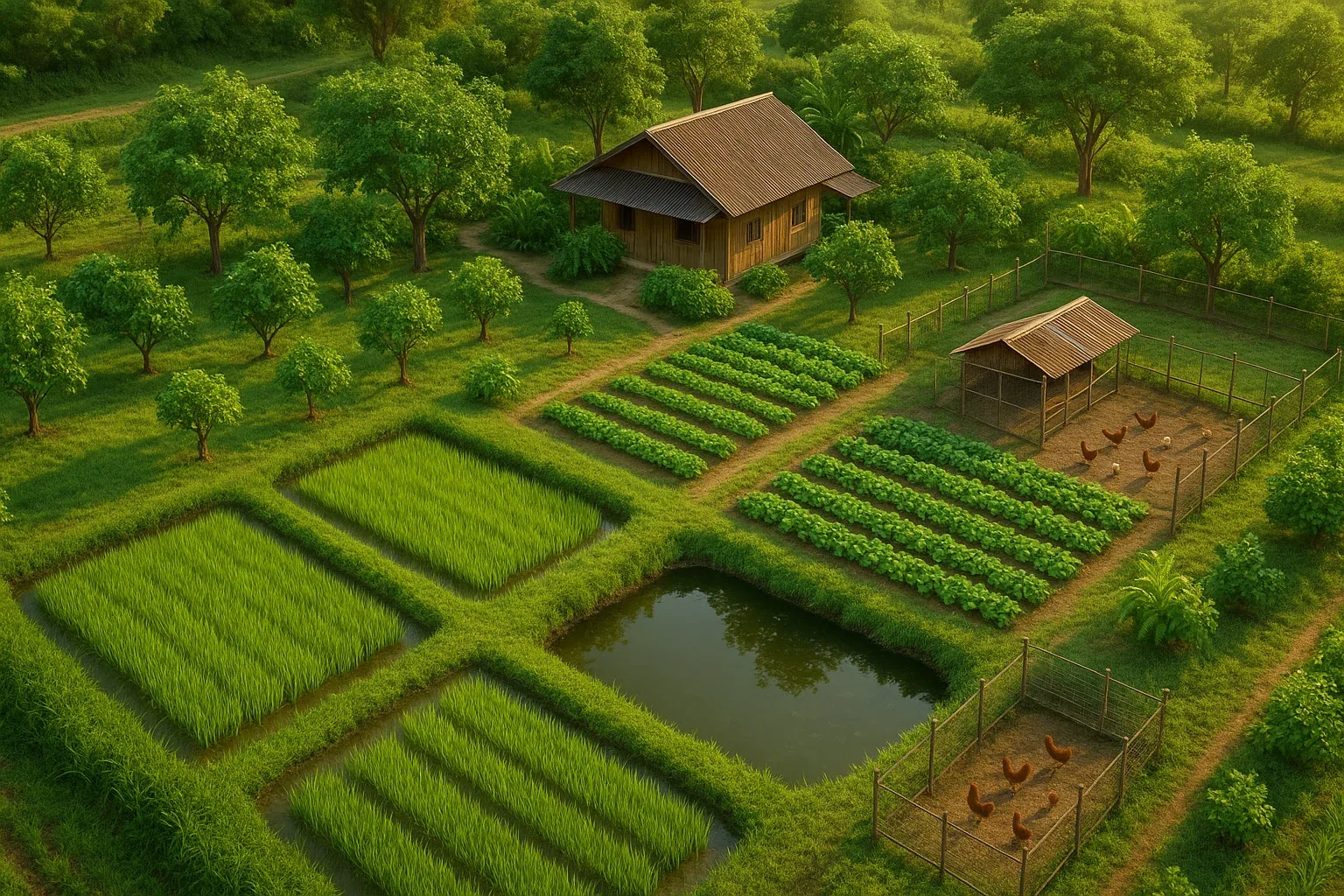
Practically, Sufficiency Economy translated into specific agricultural recommendations. The king advocated for integrated farming: rice paddies combined with fish ponds, vegetable gardens, fruit trees, and small-scale animal husbandry. A family practicing this model could feed itself first, sell surpluses second, and survive external economic shocks. No single crop failure or market downturn would devastate them. This wasn't revolutionary agriculture—it was traditional Thai farming updated with modern techniques and supported by royal research stations.
Today, you'll see the Sufficiency Economy philosophy invoked everywhere from national five-year plans to corporate sustainability reports. Universities teach it as economic theory. Agricultural cooperatives structure their programs around it. Whether this widespread adoption represents genuine commitment or convenient political branding varies, but the philosophy's influence on Thailand's development approach is undeniable.
The three pillars: Moderation (avoiding excess), Reasonableness (making decisions based on careful consideration), and Self-immunity (building resilience against external shocks). These principles guide decision-making from individual farms to national policy.
The two conditions: Knowledge (understanding your situation thoroughly) and Virtue (honest, patient, and sharing in implementation). The philosophy recognizes that sustainable development requires both technical knowledge and ethical grounding.
Thailand's central challenge has always been water—too much during monsoons, too little during dry season. King Bhumibol became obsessed with this problem, studying hydrology, visiting flood-prone areas, and developing innovative water management concepts that engineers initially dismissed as too simple to work. They worked.
The most famous innovation is the "monkey's cheek" concept—inspired by watching monkeys stuff food into their cheeks for later. The king proposed creating retention areas where floodwater could be temporarily stored, protecting urban areas downstream while preserving water for dry season agriculture. Bangkok's massive Kaem Ling retention ponds, which prevent devastating floods while recharging groundwater, emerged from this concept. Engineers now recognize it as brilliant—simple enough to implement with local materials, sophisticated enough to solve complex hydrological problems.
→ Monkey's Cheek (Kaem Ling): Retention basins and storage areas that temporarily hold floodwater and release it later, reducing urban flooding and providing water reserves
→ Royal Rainmaking: Weather modification programs intended to increase rainfall in drought-stricken areas
→ Check Dams: Small barriers in streams that slow water flow, reduce erosion, and help retain moisture in the soil
→ Weir Systems: Diverting water efficiently while maintaining flow for downstream users
Then there's royal rainmaking—a project so ambitious it sounds like science fiction. King Bhumibol first proposed Royal Rainmaking in 1955, with the first successful cloud-seeding flights in 1969. Thailand has run formal rainmaking operations ever since. The king studied meteorology to understand the science, consulted with international experts, and gradually developed techniques intended to increase rainfall in drought-stricken areas. The Royal Rainmaking Unit still operates today, deploying aircraft during severe droughts to seed clouds over critical agricultural regions.
These weren't theoretical projects. Visit rural Thailand and you'll see their physical manifestation everywhere: retention ponds, check dams, irrigation systems, and water management structures bearing royal project plaques. They're practical solutions to immediate problems, scaled appropriately for local contexts, and designed to be maintained by communities themselves. That last point mattered deeply to King Bhumibol—sustainability meant communities could operate and maintain solutions without perpetual external support.
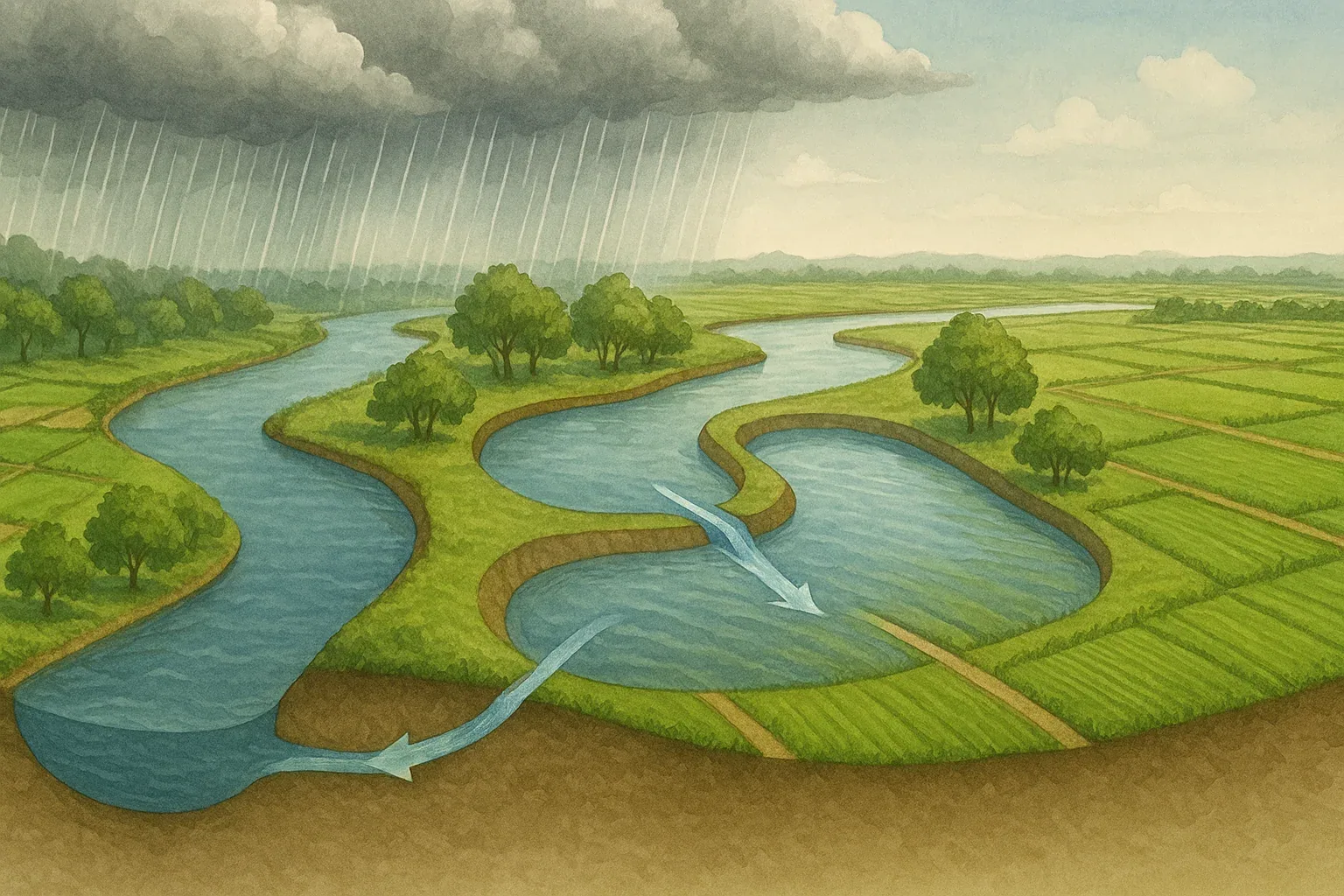
If one project exemplifies the royal development approach, it's Doi Tung. In the late 1980s, the mountain region around Doi Tung in Chiang Rai province was among Thailand's poorest and most lawless areas. Hill tribe communities grew opium as their primary cash crop—not because they were criminals but because it was the only crop that provided sufficient income in their remote, difficult terrain. Poverty, deforestation, and conflict with government authorities defined daily life.
The Princess Mother (King Bhumibol's mother) saw beyond the opium problem to its root causes: poverty and lack of alternatives. Rather than launching a punitive drug eradication campaign, in 1988 she launched the Doi Tung Development Project, which offered hill tribe farmers viable alternative crops. The project introduced coffee, macadamia nuts, and crafts production. It built schools and healthcare facilities. It created market channels so farmers could actually sell their legal crops at fair prices.
The transformation took decades, but it worked. Doi Tung today is a showcase of successful development—terraced fields producing coffee that competes internationally, forests regenerating after decades of slash-and-burn agriculture, and communities that have moved from subsistence poverty to sustainable livelihoods. The project demonstrates a core royal development principle: addressing symptoms (opium cultivation) requires solving underlying causes (poverty and lack of opportunity).
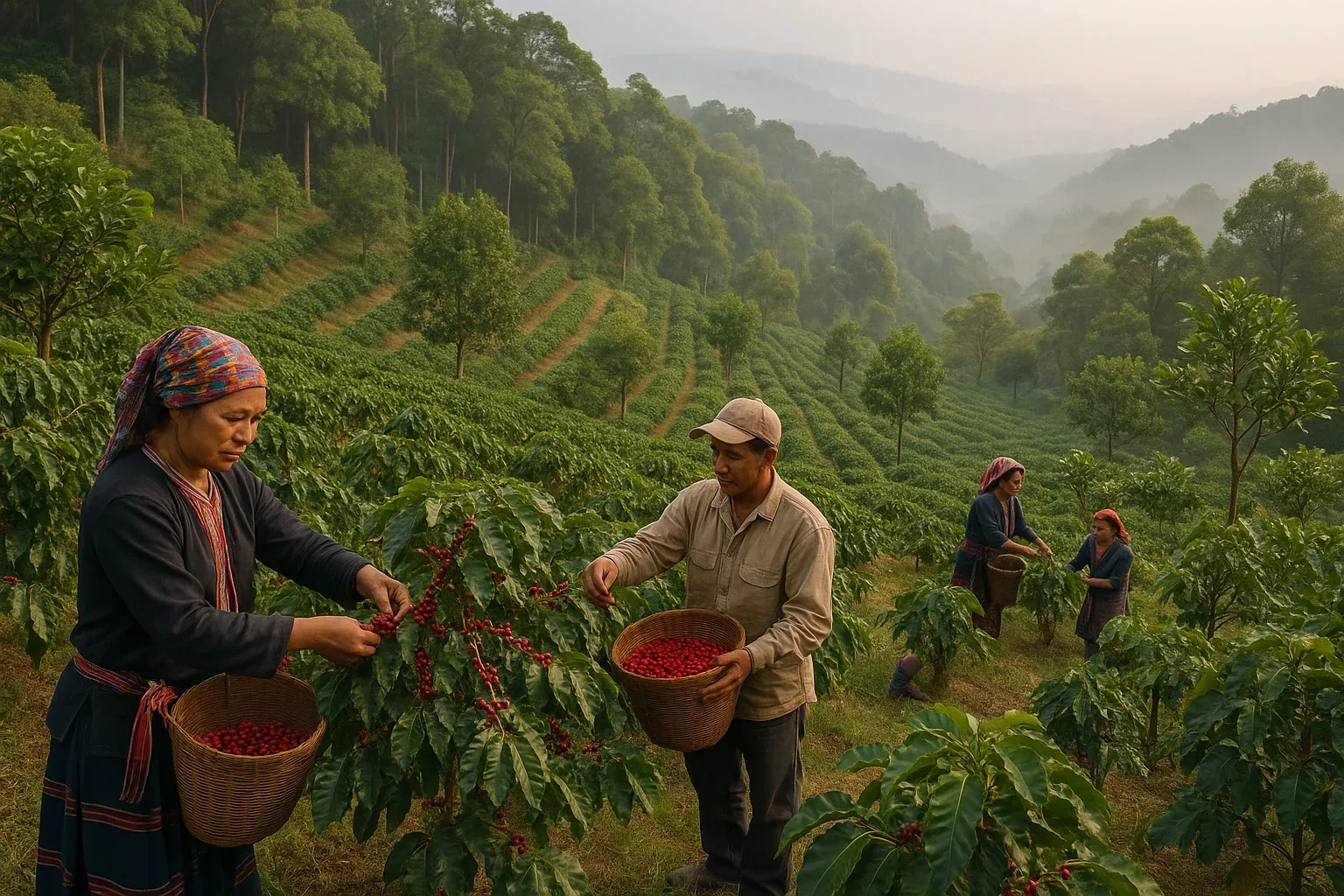
The Doi Tung Royal Villa and gardens are open to visitors, offering stunning views and insights into the project's history. Doi Tung shops and Royal Project outlets throughout Thailand sell coffee, macadamia nuts, and crafts—purchasing them directly supports continuing development work. It's one of the few ways tourists can tangibly contribute to royal project sustainability.
Beyond Doi Tung, the Royal Project Foundation operates throughout Thailand's highlands, running research stations that develop appropriate crop varieties, providing agricultural training, and establishing market channels. When you buy Royal Project coffee or strawberries in Bangkok supermarkets, you're participating in a supply chain designed to support hill tribe farmers. The premium pricing isn't arbitrary—it's structured to ensure farmers receive fair compensation while maintaining quality standards that make the products commercially viable.
Underlying all royal development work is rigorous research. King Bhumibol established Royal Development Study Centers across Thailand's diverse regions—each focusing on challenges specific to their area. These aren't ceremonial institutions; they're working research facilities where scientists test crop varieties, develop irrigation techniques, study soil management, and refine agricultural practices.
The Huai Hong Khrai Royal Development Study Center near Chiang Mai became the king's personal laboratory. He would spend weeks there, conducting experiments in rice cultivation, testing different irrigation methods, and working directly with researchers. Stories of the king kneeling in muddy rice paddies, consulting with farmers about soil conditions, or sketching out water management concepts on napkins are part of Thailand's national mythology—but they're also simply true. His hands-on approach meant royal projects were grounded in practical reality rather than theoretical ideals.
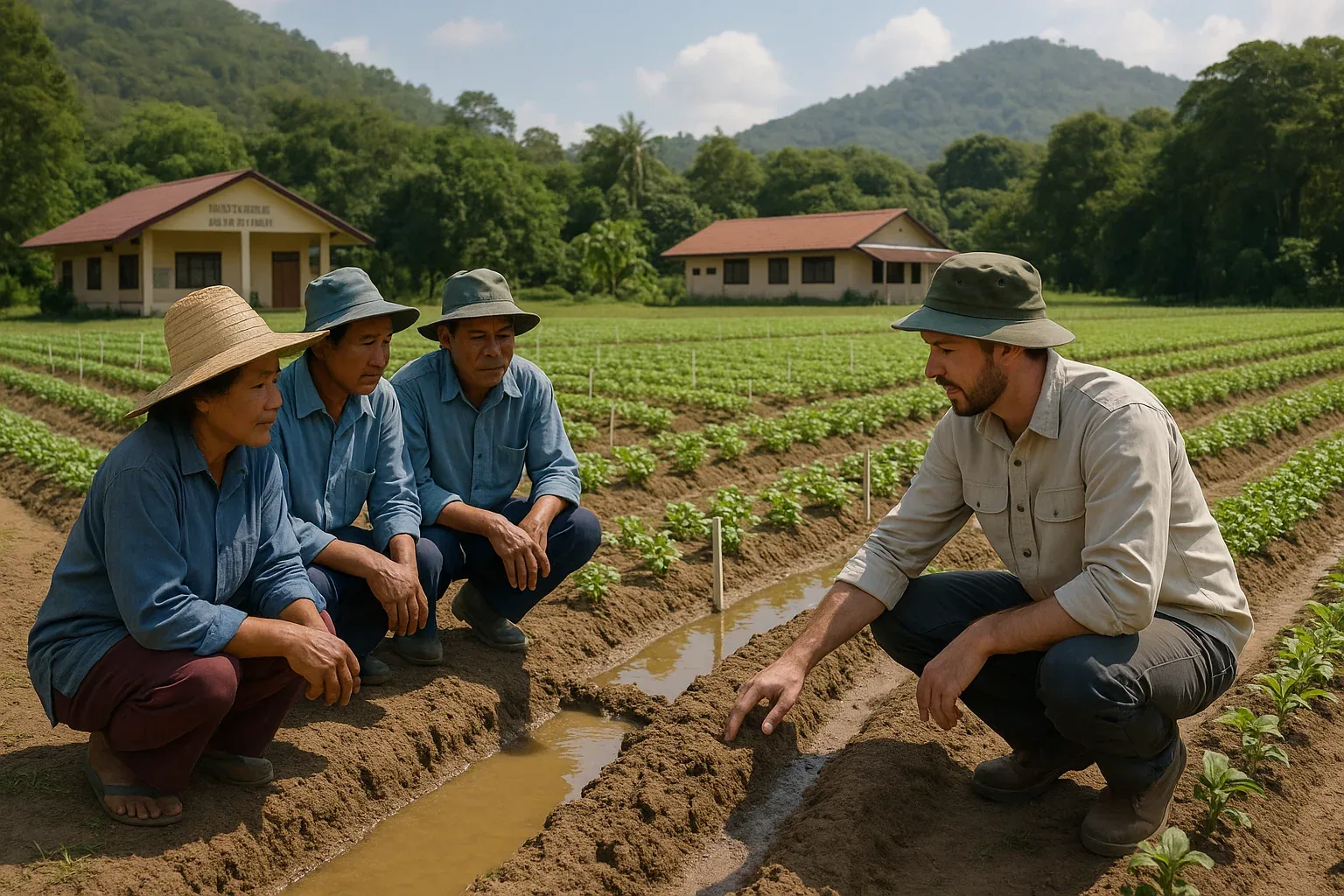
These centers continue operating today, developing solutions for emerging challenges: climate adaptation, organic agriculture, water conservation in increasingly severe droughts, and helping small farmers compete in modern markets. Many offer educational visits—if you're interested in agriculture, development, or sustainability, visiting a royal development study center provides insights you won't find in tourist-focused cultural sites.
The research focus on "appropriate technology" was deliberate. Solutions had to be implementable by farmers with limited capital using locally available materials. A brilliantly engineered irrigation system requiring imported parts and specialized maintenance would fail. A simple check dam built with local stone that farmers could repair themselves would succeed. This pragmatism—some might say humility—about what development could realistically achieve separated royal projects from many failed development initiatives that ignored local capacity and context.
Several Royal Development Study Centers welcome educational visits. The Huai Hong Khrai center near Chiang Mai and Phu Phan center in Sakon Nakhon offer tours showing integrated farming techniques, water management systems, and research programs. These aren't polished tourist attractions—they're working facilities, which makes them fascinating for anyone interested in agriculture or development.
Call ahead to arrange visits, as access depends on research schedules. Entry is often free or low-cost, though donations supporting ongoing work are appreciated. Guides (usually Thai-speaking) can explain specific projects and demonstrate techniques farmers have adopted throughout surrounding regions.
Perhaps King Bhumibol's most directly applicable contribution to small-scale agriculture was "New Theory" farming—a model for efficiently managing small land holdings (typically 15 rai or about 2.4 hectares) to maximize food security and income. The theory divides land into specific proportions: 30% for water storage (pond or reservoir), 30% for rice cultivation, 30% for crops and fruit trees, and 10% for housing and animal husbandry.
This allocation isn't arbitrary—it emerged from years of experimentation at royal research stations. The water storage provides irrigation during dry season and supports fish farming for protein and additional income. Rice ensures food security. Diversified crops generate income and provide insurance against single-crop failure. The integrated system creates synergies: animal waste fertilizes crops, crop residue feeds animals, fish pond water irrigates fields.
Large numbers of Thai farmers—particularly in the Northeast—have adopted New Theory farming with support from agricultural extension programs. It's particularly relevant in northeastern Thailand, where rainfall is unpredictable and soils are poor. The model doesn't make farmers wealthy, but it provides stable subsistence plus marketable surplus—exactly what Sufficiency Economy philosophy aims for. Foreign development agencies have studied New Theory as a potential model for small-holder agriculture in other developing countries.
King Bhumibol passed away in 2016, but his development projects continue under King Rama X. The Royal Development Project Board coordinates ongoing work, maintaining existing initiatives while adapting to new challenges. Climate change, urbanization, agricultural market transformation, and shifting rural demographics present different problems than those King Bhumibol addressed, but the underlying philosophy—community-centered, sustainable, scientifically grounded development—remains consistent.
For expats living in Thailand, royal development projects offer several points of connection beyond historical interest. If you're involved in agriculture, sustainability, or development work, the royal project model provides tested approaches to common challenges. Royal Project products—coffee, tea, macadamia nuts, dried fruits, crafts—are widely available and purchasing them directly supports continuing work. For those interested in volunteering, some royal-related initiatives have taken on skilled volunteers or interns, especially in education and agriculture, though opportunities are limited and usually arranged case-by-case.
More broadly, understanding royal development projects illuminates aspects of Thai society that can puzzle newcomers. The reverence for King Bhumibol wasn't just ceremonial—it reflected genuine gratitude for tangible improvements in millions of lives. The Sufficiency Economy philosophy, which appears in unexpected contexts from corporate strategy to everyday life, represents more than political rhetoric—it's a development philosophy with demonstrated results. The monarchy's role extends far beyond symbolic functions, deeply embedded in Thailand's agricultural transformation and rural development.
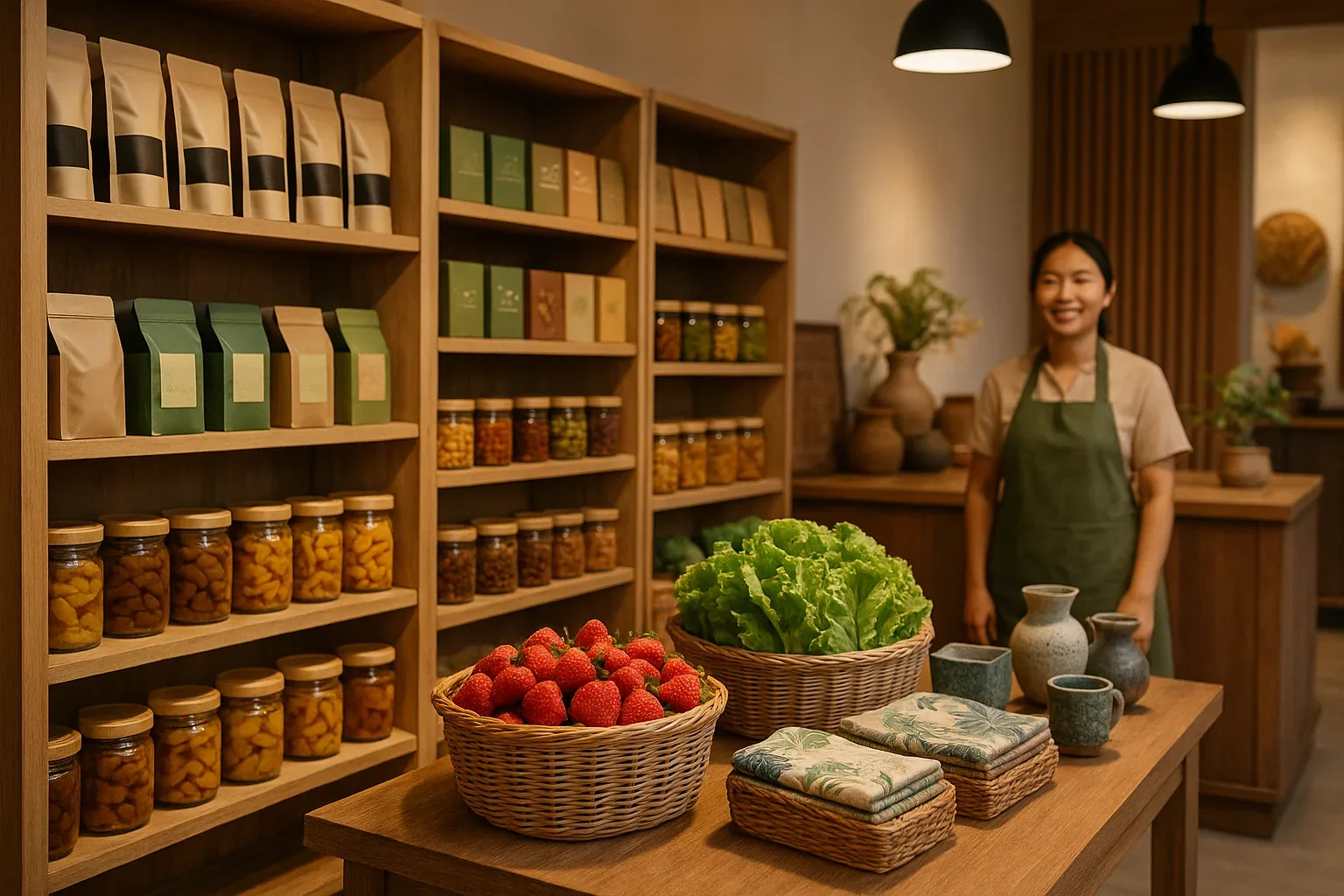
Walking through a Royal Project shop, you're seeing more than premium agricultural products. You're seeing the physical manifestation of a development philosophy that transformed how Thailand approaches poverty, sustainability, and rural empowerment. Each bag of coffee represents a farmer who shifted from illegal opium cultivation to legal, sustainable crops. Each craft item represents preserved traditional skills and community-based production. Each purchase, in a small way, continues supporting the work.
The royal development projects stand as testament to what patient, locally grounded, scientifically informed development can achieve. They weren't quick fixes or dramatic transformations—they were decades-long commitments to understanding problems deeply, testing solutions rigorously, and empowering communities to improve their own circumstances. In a world of failed development initiatives and wasted aid, Thailand's royal projects offer a different model: one rooted in respect, patience, and genuine partnership with those being served. That legacy continues shaping Thailand today, visible in terraced hillsides, thriving rural communities, and a development philosophy that prioritizes sustainability over rapid growth. For those willing to look beyond Bangkok's gleaming modernity, the kingdom's agricultural heartland tells this quieter but equally transformative story.
Doi Tung
Chiang Rai's model development project replacing opium cultivation with sustainable agriculture, coffee production, and crafts.
Huai Hong Khrai
Research center near Chiang Mai where King Bhumibol personally conducted agricultural experiments and water management studies.
Royal Rainmaking
Weather modification program initiated in 1955, with first operational flights in 1969, to increase rainfall in drought-affected agricultural regions.
Kaem Ling System
Network of retention ponds throughout Bangkok and surrounding areas preventing floods while storing water for dry season.
Support the Work
Royal Project products available at major supermarkets directly fund continuing development initiatives and support hill tribe communities.
Coffee & Tea
High-altitude Arabica coffee and oolong tea from Doi Tung and Doi Ang Khang
Fresh Produce
Strawberries, tomatoes, lettuce, and specialty vegetables year-round
Processed Goods
Macadamia nuts, dried fruits, jams, and honey
Handicrafts
Traditional textiles, ceramics, and home goods preserving hill tribe crafts
4,000+ development projects initiated during King Rama IX's reign
38 Royal Project Foundation development centers in northern Thailand
1969 First Royal Project established in highland regions
40,000+ farming families directly benefit from Royal Project programs